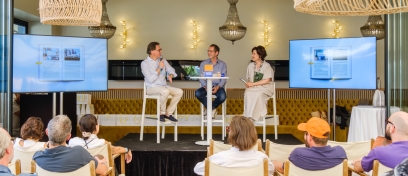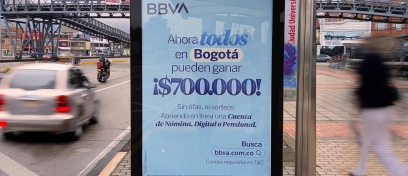For brands
10 Reasons Why OOH Advertising Continues to Outperform
According to Magna, Out-of-Home (OOH) holds about 6% of the $500 billion of global ad spend. While many media are losing out to digital, OOH market share has remained stable for the last five years and has a strong growth of up to 12% in some markets like France and Russia. So why does OOH continues to outperform?
1. Unfragmented OOH: A Growing attentive audience
- Time spent outside the home is increasing.
- OOH is largely unaffected by the erosion of audiences through the continued proliferation of media channels.
- OOH remains a mass reach medium, reaching at least half of all consumers in most markets and as much as 90% in some.
2. Measured OOH: Progressive & accurate audience measurement
- OOH audience measurement is increasingly sophisticated in many countries such as UK (Route), Germany (ma Plakat) and the US (Geopath), driving innovation in the industry as a whole.
- Measurement incorporates the latest technologies like GPS, location data, WiFi and eye tracking, which ensures the optimum accuracy of audience data.
- Unlike most other media which provide only viewable impressions, the best OOH audience measurement delivers actual viewed impressions.
3. Real OOH: A medium that is part of the urban landscape & immune to ad blockers
- OOH plays a natural and accepted role in the urban landscape and therefore it is part of consumers’ daily lives.
- Its physical presence in the real world means it cannot be blocked like online ads can.
4. Digital OOH: Digital is driving OOH revenue growth
- Digital OOH (DOOH) allows more advertisers to benefit from premium sites, which increases the revenue that each screen generates.
- DOOH is the second fastest growing medium and it is predicted to account for over 30% of OOH revenue in some mature markets eg UK and Australia.
- DOOH global share of OOH revenue is predicted to grow to 24% by 2021.
5. Uncluttered OOH: Fewer panels means higher impact
- Global OOH revenues are increasing but the total volume of ad units is not.
- Clutter is being culled, leaving fewer yet more impactful sites.
- Unlike OOH, other media channels are fragmenting.
6. Renewed OOH: City contract renewals drive the digitisation of the medium
- In the face of concerns about accountability and financing, municipalities and transport authorities are increasingly seeing the benefits of partnering with progressive OOH providers.
- Any major OOH renewal bids now include digital screens, connectivity and programmatic possibilities, thereby increasing the availability of digital inventory and city services in cities.
- Benefits to the city include receiving revenue from advertising, improved facilities for city dwellers, sponsored self-serve cycle schemes and connectivity like WiFi hotspots and USB charging ports.
7. Targeted OOH: Contextual ads for relevant audiences
- DOOH advanced placement, for example through targeting or programmatic, allows for more accurate targeting of niche environments while reaching previously unsegmented key audiences.
8. Data-driven OOH: Ad delivery driven by live audience data
- OOH is adopting programmatic technologies to optimise its media buying process.
- Online platforms and CMS for OOH allow more targeted campaign planning and instant delivery to appropriate environments and audiences.
9. Dynamic OOH: Targeting at POS, last window of influence
- Choosing the right OOH environments and locations allows brands to target consumers at or near the Point of Sale, promoting activation and optimising their drive-to-store strategies.
- DOOH campaigns integrated with smartphone and marketing data increase the flexibility of the medium and offers contextualised messaging according to factors such as the type of audience, time of day, conditions of the environment and location.
10. Native OOH: From advertising to editorial
- OOH has always excelled at campaign creativity whether within formats, environments or creative concepts.
- New technologies in DOOH with connectivity offer new opportunities for engagement and interactivity including audience-driven mobile integrations and live feeds of events.
- Native OOH content offers brands a platform to communicate ‘buzz-worthy’ brand communication and play a compelling part in people’s lives.




